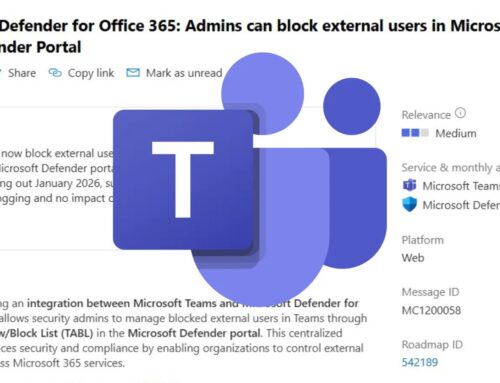
Hackers Reportedly Demand Google Fire Two Employees, Threaten Data Leak
Cyber Extortion: Google Under Fire as Hackers Demand Employee Termination
In a deeply concerning development that underscores the escalating complexities of cyber warfare, Google finds itself facing an unprecedented ultimatum. A group, self-identifying as a coalition of hackers, has reportedly issued a chilling demand: terminate two of its employees or face the public release of sensitive corporate databases. This audacious threat, disseminated via a Telegram post, specifically targets Austin Larsen and Charles Carmakal, both integral members of Google’s esteemed Threat Intelligence Group. This incident serves as a stark reminder that cyber threats are evolving beyond mere data breaches, now encompassing direct demands for personnel action, raising critical questions about corporate resilience and employee protection in the digital age.
Theatomy of the Ultimatum: A Direct Threat
The core of this cyber extortion plot lies in the direct naming of specific individuals and the explicit threat of data exposure. Austin Larsen and Charles Carmakal, both recognized figures within Google’s cybersecurity apparatus, have been singled out by this alleged hacker group. The demand is unambiguous: fire them, or Google’s proprietary information will flood the internet. This tactic, while unverified in its execution, represents a significant shift from traditional ransomware or data exfiltration attempts. It introduces a new dimension where cybercriminals attempt to exert direct influence over internal corporate decisions, turning human capital into a bargaining chip.
Who are the Targeted Employees? Implications for Threat Intelligence
The selection of Austin Larsen and Charles Carmakal is particularly noteworthy. As members of Google’s Threat Intelligence Group, their roles inherently involve identifying, tracking, and counteracting sophisticated cyber threats. Their work directly contributes to Google’s robust security posture, protecting billions of users and vast digital infrastructure. Targeting individuals in such strategic roles could be an attempt to disrupt Google’s intelligence gathering capabilities, retaliate for past counter-cybercrime operations, or simply to maximize the psychological pressure on the company. The implications extend beyond Google, potentially chilling the efforts of other threat intelligence professionals who might fear similar personal targeting.
Unpacking the Threat Landscape: Beyond Ransomware
This incident transcends the common understanding of cyberattacks. While data exfiltration and the threat of public disclosure are hallmarks of modern ransomware operations (e.g., those exploiting vulnerabilities like CVE-2021-34527 affecting Microsoft Exchange, or the more recent CVE-2023-38831 in WinRAR), this particular demand introduces a novel layer of psychological warfare and corporate manipulation. It blurs the line between traditional cybercrime and an attempt at direct corporate governance through coercion. Organizations must now contend with the possibility that their employees, especially high-profile security personnel, could become direct targets of extortion.
Google’s Response: Navigating a PR and Security Minefield
Google faces an unenviable predicament. Acceding to the demands would set a dangerous precedent, signaling vulnerability and encouraging similar future attacks. Refusing them risks the actual leak of proprietary data, potentially leading to severe reputational damage, regulatory fines (like those stemming from GDPR violations following data breaches), and intellectual property loss. The company’s response will be meticulously scrutinized by the cybersecurity community, corporate boards, and the public. This situation demands a multi-faceted approach involving advanced cyber defenses, robust internal communications, legal counsel, and potentially direct engagement with law enforcement agencies like the FBI or Europol.
Remediation Actions and Proactive Defense Strategies
While this particular incident focuses on an extortion attempt, the underlying risk of data exposure necessitates a strong security posture. Organizations facing similar threats or looking to prevent them should consider the following:
- Enhanced Employee Protection Programs: Develop and implement specific protocols for protecting critical personnel, especially those in high-risk cybersecurity roles. This includes monitoring for personal threats and providing psychological support.
- Robust Data Governance and Segmentation: Ensure sensitive databases are heavily protected, segmented, and access-controlled. Implement a Zero Trust architecture.
- Incident Response Plan Review: Regularly test and update incident response plans to include scenarios involving direct personnel targeting and public extortion demands.
- Threat Intelligence Sharing: Collaborate with intelligence agencies and industry peers to share information on emerging extortion tactics and threat actor methodologies.
- Legal and PR Preparedness: Establish clear communication strategies and legal frameworks for responding to public threats and potential data leaks.
- Continuous Vulnerability Management: Proactively identify and patch vulnerabilities (including those recently discovered like CVE-2024-XXXXX – *placeholder for a recent, relevant CVE if available at time of writing*) to minimize potential entry points for attackers.
The Future of Cyber Extortion: A Troubling Precedent?
This audacious demand on Google could signal a new, more aggressive phase in cyber warfare. If successful, such tactics might become more prevalent, pushing cybercriminals beyond financial gain to exert influence over corporate human resources and strategic decisions. Organizations must evolve their security strategies to anticipate and mitigate these complex, multi-layered threats that now place human capital directly in the crosshairs. The incident with Google is not merely a data security challenge; it is a test of corporate resilience in an increasingly hostile digital landscape.





